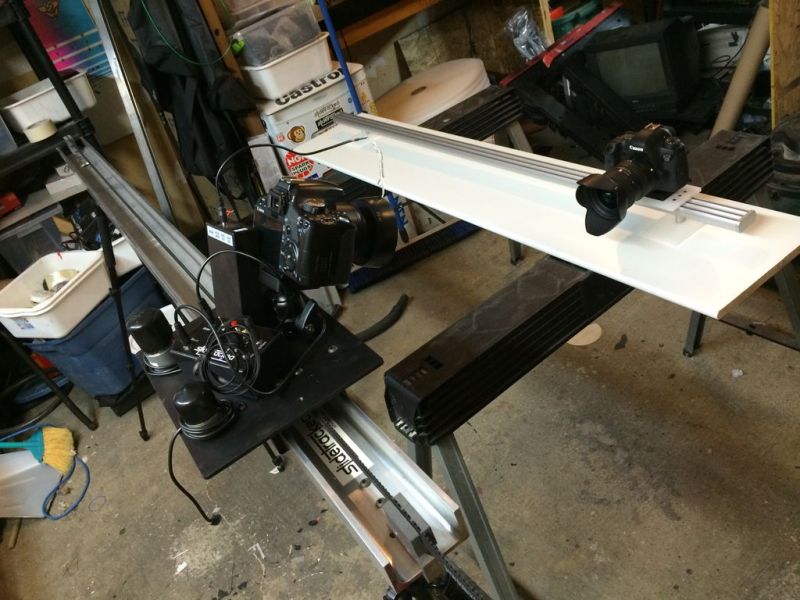It’s not hard to drastically increase the production value in your videos by adding a camera slide to your shot — in fact, [Derek] shows us how to make a decent camera slide using parts from IKEA for less than $30.
The hack makes use of a cutting board, glider and hook accessories, a triple curtain rail, and two ceiling fixtures. The ceiling fixtures are simply used to make a mount for the curtain rail to rest on. [Derek] shows us an easy way to make the carriage with some careful drilled holes in the cutting board — he’s added a 3D printed tripod head for mounting the camera, but really you can use whatever you want.
It’s a pretty simple and easy to build rig, and the results are quite impressive — just check out the following video to see!
We love these hacks that make use of IKEA products, because it takes advantage of material that would normally be expensive — but since it’s mass produced for IKEA, it generally ends up being rather cheap to use! We’ve seen a Rostock 3D printer made from IKEA shelving, a simple GoPro panning time-lapse setup made from an IKEA timer, and even a printing press made from an IKEA chest of drawers!
















I prefer the conduit+rollerblade wheel setup. a lot easier to make and you can get a lot longer runs that pack down really easy in the back of the car.
you can join up multiple of these rails easily. they even sell quarter circle ones if you need a bend.
How is it that I can’t find any actual examples of conduit+rollerblade wheel on Hackaday? I know exactly what you’re talking about and just can’t believe we haven’t covered it before.
Here’s one with skateboard wheels
http://hackaday.com/2010/11/30/time-lapse-camera-dolly/
This one was posted three weeks ago or so.
http://hackaday.com/2014/01/27/yet-another-diy-camera-slider/
It doesn’t seem smooth enough.
Not bad, but those wheels on those rails don’t roll very smoothly (I have these curtains hung in my house). If he were to replace them with radial bearings, it might be ok, but I questions the accuracy over length of those extrusion rails.
Second the use of pipes and wheels. They make inside fittings for PVC pipe to use for making any size setup. Overuse of slide shots is the rule. Just watch episodes of How It’s Made.
Hi!
I’ve seen multiple setups like that, but i fail to understand what it is used for. Could someone explain me?
The only use i can figure is for compositing large picture of macro photos.
If not on macro mode, what does the sliding ability bring?
(i’m not criticizing this work, i really would like to understand it’s use)
One application – timelapse. If you just take a bunch of pictures and loop them into a timelapse movie, you get a boring movie. If you move the camera a small (and very consistent) amount between frames, then you get a more visually interesting movie. Especially if there’s some foreground that seems to really scroll by while the background stays nearly stationary. Feel free to use stepper motors or even wind up timers to pull a piece of fishing line to drag your camera along the rail. Works great. It’s sort of the complete and total opposite of bullet time.
When shooting video, the slide could be used for a short tracking shot.
The camera could be kept beside the actors as they walk alongside the track.
I supose that for stills you could use it for making stitched images of large objects in macro or faking an ultra-wide angle lens by stitching images, sliding the camera far enough along that each image overlaps just enough for the software to stitch them together.
thanks for the information, Erik and Jeff :)
I wonder if a similar device could be built with a curved rail. It may be difficult to source, but with a semi circular rail, we could use it for 180° pictures of objects,and why not process the pictures to get a 3D model out of it?
Perhaps scan in 3D with classical methods, then apply high resolution textures based on the pictures…